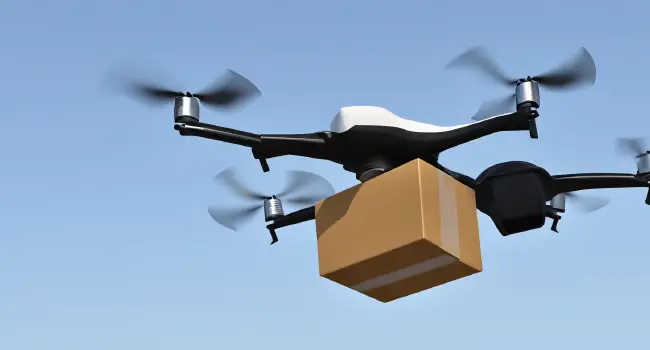Delivery Drones

Delivery drones have been a topic of interest for several years now, and as technology advances, they are becoming increasingly common in many industries. A delivery drone is an unmanned aerial vehicle that can deliver packages or goods to a specified location. These drones are equipped with GPS technology, cameras, and sensors that enable them to navigate and avoid obstacles while in flight. In this article, we will explore the benefits and challenges of delivery drones and their potential impact on the future of logistics.
Benefits of Delivery Drones
One of the most significant advantages of delivery drones is speed. Drones can travel at high speeds and can reach their destination much faster than traditional delivery methods. This can be particularly beneficial for time-sensitive deliveries, such as medical supplies or emergency aid.
Another advantage of delivery drones is their ability to reach remote or hard-to-access areas. In many parts of the world, particularly in developing countries, the lack of adequate transportation infrastructure can make it difficult to deliver goods and supplies. Delivery drones can bypass these obstacles and provide much-needed support to these areas.
Delivery drones are also environmentally friendly. Unlike traditional delivery methods, such as trucks or cars, drones do not produce harmful emissions. This can significantly reduce the carbon footprint of delivery services and help to mitigate the effects of climate change.
Challenges of Delivery Drones
Despite the benefits of delivery drones, there are also several challenges that must be addressed. One of the most significant challenges is regulatory compliance. Many countries have strict regulations regarding the use of drones, particularly for commercial purposes. Companies that want to use delivery drones must comply with these regulations and obtain the necessary permits and licenses.
Another challenge is safety. Delivery drones operate in airspace that is shared with other aircraft, such as planes and helicopters. It is essential to ensure that drones do not interfere with other aircraft and that they are not a risk to public safety. In addition, there is a risk of drones crashing or malfunctioning, which could cause damage or injury.
Finally, there is the challenge of reliability. Delivery drones must be reliable and efficient, and they must be able to deliver goods to the correct location. There is a risk of technical malfunctions or errors in the delivery process, which could lead to delays or lost packages.
The Future of Delivery Drones
Despite the challenges, delivery drones have the potential to revolutionize the logistics industry. As technology advances and regulations become more accommodating, we can expect to see an increase in the use of delivery drones for commercial purposes. This could lead to faster, more efficient, and more environmentally friendly delivery services.
Delivery drones have the potential to transform the logistics industry by providing faster, more efficient, and more environmentally friendly delivery services. Once the challenges to drone deliveries are overcome, we can expect to see an increase in the use of delivery drones for commercial purposes, and we can look forward to a future where drones play an increasingly important role in our daily lives.
Next up: Conservation Drones

